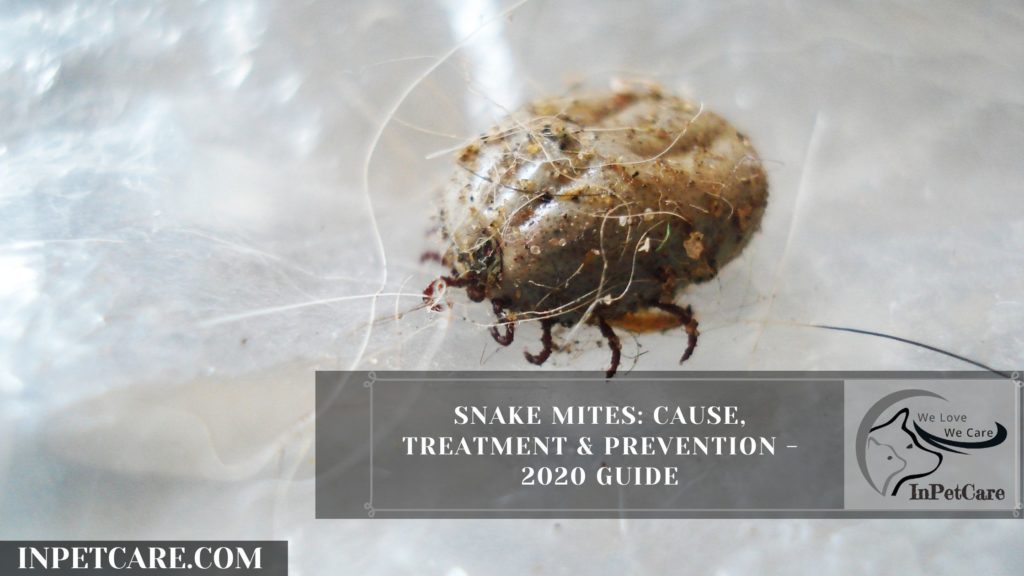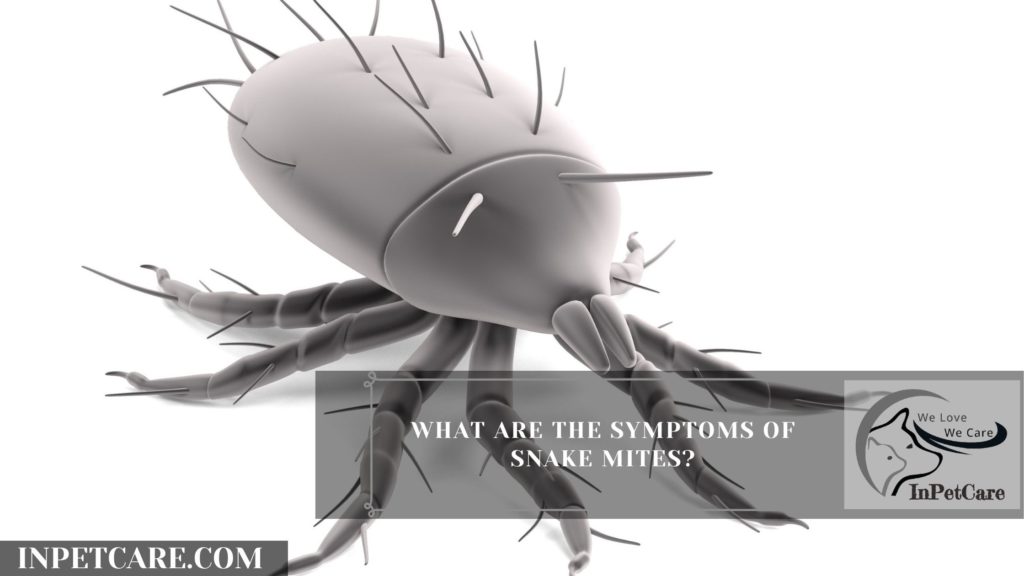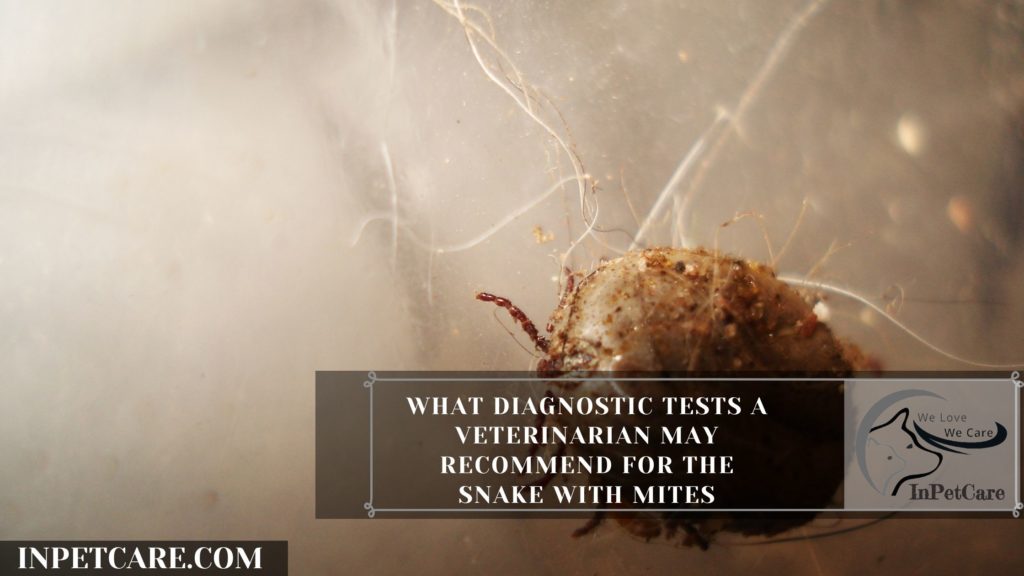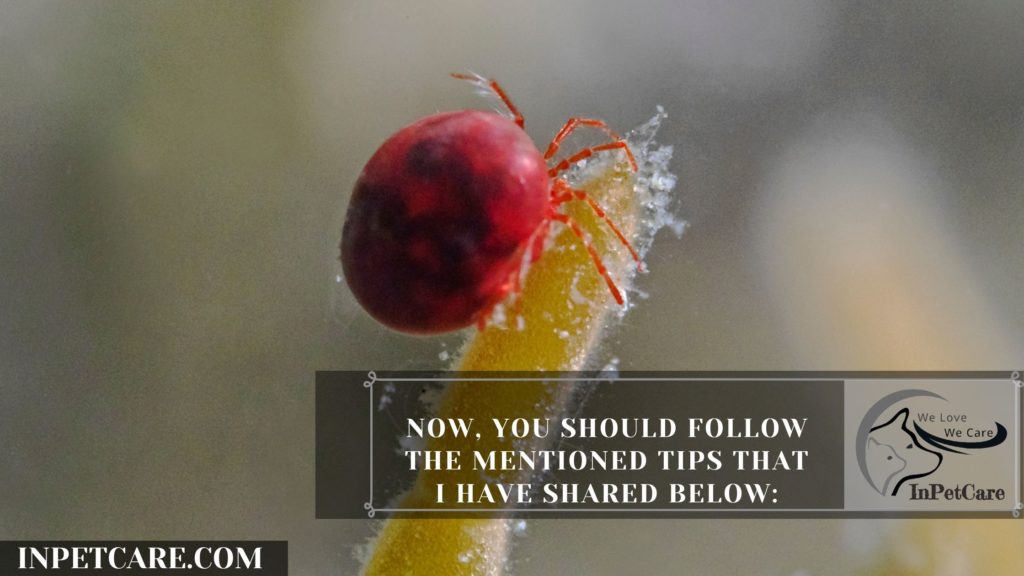
Post Contents
- Snake Mites 101 Step-by-Step Guide { Cause, Prevention, & Treatment}
- What are the Symptoms of Snake Mites?
- What’s a good Predisposing captive condition?
- What Diagnostic tests a veterinarian may recommend for the snake with mites
- What are the Prevention or Safe Practices of Snake Mites?
- Quarantine
- What’s Proper Hygiene for Snake Mites?
- What Treatments a Veterinarian Would likely Recommend for Snake Mites Treatment?
- Other Methods to Treat Snake Mites
- Conclusion
Snake Mites 101 Step-by-Step Guide { Cause, Prevention, & Treatment}
Watch Video on How to Treat Snake Mites – 2020 Updated Version
The most common parasite found on snakes is Ophionyssus matrices, not only infest lizards but also on captive crocodiles, turtles, and other reptiles.
This guide is to highlights all the possible ways on how to treat snake mites.
Trombiculid mites are also known as Chiggers and Ophionyssus acertinus are also a kind of lizard mite, both are very rare on snakes.
We can’t tell you all the mites here because more than 200 ticks and mites are present on this planet that parasitize reptiles.
Read Also
Ophionyssus matrices are the most common mites and compared to other mites, Ophionyssus matrices have been well studied as a pathogen. Point to note, Ophionyssus natriuresis is parthenogenetic and has a direct life cycle.
Interestingly, a single female mite can produce thousand of offspring under appropriate conditions. They are more common in snakes that are exposed to other reptiles or wild-collected. Ophionyssus matrices can be found on all species of lizards and snakes.
What are the Symptoms of Snake Mites?
Many symptoms indicate the possibility of snake mites. Luckily I have share 10 symptoms of snake mites:

Read Also
- If you notice your reptile soaking constantly in its dish, then he is likely to be infested.
- Specks floating in the water can be seen through the naked eye.
- Tiny moving objects on the snake’s skin or in the cage is a red signal too.
- Same here too, if you notice tiny moving objects in the skin folds or in labial pits or around eyes, he is badly infested
- If you notice or find organisms crawling on your skin and dress after handling your snake or anything from its vivarium or cage, it is a symptom of snake mites too.
- If you run your hand against the grain of your reptile’s scale and feel one or more than on raised scales – it is a sign of snake mites.
- If your reptiles have dysecdysis, then may they are infested. 🙁
- Swollen eyes in reptiles also indicate the presence of snake mites.
- If you find your reptile has reduced its appetite and is irritable, then it is also an indication of snakes mites.
- If you notice tiny objects moving or crawling inside the cage or on the items kept inside the cage then it’s alarming too.
What’s a good Predisposing captive condition?
Well, mites look for moderate levels of humidity with enough warmth to successfully grow and molt. Mites are a king indication of poor quarantine practices and sanitation.
Mites are capable of transmitting many harmful blood-borne diseases, so if you find mites on your petted reptiles, you need to get them to a thorough health assessment by a professional or experienced reptile veterinarian as soon as possible.
What Diagnostic tests a veterinarian may recommend for the snake with mites
You should bring your snake along with the specks’ sample from the water bowl to the veterinarian.
Even mites can be easily confirmed with low magnification, still, the specification of a mite can be only identified by thorough submission to a specialized lab.

Notice: Don’t Copy Our Post ” Snake Mites “
Example: Red specks are most likely Ophionyssus acertinus or trombiculid mites and Grey to black specks are most likely Ophionyssus matrices. You can use glue traps that are mostly for cØckroaches to collect some mites samples.
You can place the glue trap inside the cage to collect mites that can be brought to the vet clinic for identification. The veterinarian may also need some skin scrape to detect trombiculid mites as they live beneath the skin of the snakes.
What are the Prevention or Safe Practices of Snake Mites?
Isolating is the best way to prevent snake mites, You can isolate all the mite-infested cages by using one of the following techniques that I have shared.
Tape: It’s a kind of low-tech isolation technique but much effective. You can place heavy-duty masking tape or duct tape around the exit and entry point of the cage or on the shelves that are surrounded around the cages.
The edge of the tape that is facing the cage should be loosened or rolled back as it will the sticky underside to be exposed. This will help to trap some mites that are trying to crawl around the cage.
Moat: You can place the cage in a moat of water. This technique is very effective for small aquariums or cages or vivariums that can be easily placed inside a large watertight tank or container.
To decrease the water’s surface tension, you may need to add a couple of dishwashing soaps in the water. It will also help in drowning any mites that are trying to crawl away from the vivarium or cage, very quickly.
Pesticide: You can spray the floor and the shelf surrounding the cage with frontline spar or Pro-Vent-a-mite to kill all the mites in the environment or in the cage.
Before you begin spraying it all over the floors or shelf, you need to make sure that the room is fully ventilated so the fumes do not affect your pet or you.
Now, after isolating, you need to assess your snake as well as other reptiles if there are in your household as mites are capable of crawling long distances. So, if any others are also infested with the mites then you should isolate them as well.
Now you need to clean all mite-infested cages thoroughly. You must throw out porous wood furnishings and all substrate.
Put them in a plastic bag, seal them tightly and place them outside in the garbage.
Even a single escaped mite can become or produce thousands of mites just within a few months.
Do you think that decoration is worth risking your reptile health or another outbreak of mites? No, right?
If you still want to save the decorations, then I would recommend spraying the interior of the plastic bag with frontline or pro-vent-a-mite spray. You can also prefer to add no pest strip to the bag and close it tightly.
Now you should place the sealed bag in a secured place for a few days or a week. After a week, you can take out all the decorations and rinse them in hot water. I would recommend you repeat the process once more.
If you see warm weather, then you can even consider using sunlight instead of insecticides. In India and many places and even our ancestors used to place the cage or object in the bright sunny place to get rid of mites.
You can place the black bag in direct bright sunlight to get rid of mites but you will need to make sure that the temperature inside the bag is over 120 degrees Fahrenheit for more than 4 hours.
Now, You should follow the mentioned tips that I have shared below:

- You should wash all the remaining furnishing as well as a cage with hot soapy water and rinse it well.
- You should prefer to use nonporous cage furnishings and easy to change substrate like newspaper or tissue until your snake has been free of mites form more than 4 months, 3 months at least.
- You must not prefer to place your reptile back into their cage or vivarium until it has been completely treated for mites.
- Instead of avoiding the cleaning process, you should repeat the cleaning process that I have shared, after every mite treatment.
Quarantine
Now, you should soak all the reptiles in shallow water for at least 30 minutes. After those 30 minutes, inspect the water and your reptile carefully for mites. If you notice some then, it’s time to discuss this matter with your veterinarian.
The veterinarian will decide if a preventive treatment for your reptile is appropriate. They may advise a quarantine for at least 60 days to monitor closely your reptile and it’s a cage for mites.
What’s Proper Hygiene for Snake Mites?
Before handling the mite-infested tools, cage, reptiles, and decorations, you should finish all the activities with your healthy reptiles. Now, it’s time for you to wash your hands thoroughly with warm soapy water as soon as you are done with handling the reptile. To dry your hand, you may prefer to use a disposable towel.
Just after handling a mite-infested cage or reptile, never go back to handle a healthy reptile to reiterate. You should take a shower and change your clothing completely as it will reduce the chances of you spreading the infection to a healthy reptile.
What Treatments a Veterinarian Would likely Recommend for Snake Mites Treatment?
A Veterinarian Would likely Recommend “Acaracides” for Snake Mites Treatment but there is some points to note before you use Acaracides :
Many tick and flea sprays that are safe for cats and dogs contain mostly active ingredients at a concentrated level. So, this kind of sprays is toxic for most reptiles. Plus, most of the counter mite treatments are not effective for reptiles. Taking that kind of mite treatment is useless.
However, many products are maybe effective but please avoid using an unfamiliar product without proper research. Using an unfamiliar product without even consulting with an experienced veterinarian can be harmful or life-threatening to your pet.
There are safe products that you can prefer to use like Frontline spray, Pro-vent-a-mite, and Ivermectin spray. Point to note – avoid using ivermectin on tortoises or turtles as it can cause fatal permanent paralysis,
Before applying acaricides on your reptiles, make sure they are well hydrated. You may prefer to soak your reptile in shallow water as it will allow your reptile a drinking opportunity. After soaking your reptile, you must pat dry them and then apply the acaracide. 🙂
Consider other diagnostic tests, additional treatments, and treatments to rule out any underlying serious health issues to keep your snake’s overall health all clear and good.
Other Methods to Treat Snake Mites
I have shared some other methods that work perfectly on treating snake mites. Whichever method you decide to use must be based on your own particular set of circumstances as this method is maybe not best for everyone. I am sharing this after interviewing a snake breeder ( Sam 0, it works perfectly for him so you may want to try.
Firstly, you need to recognize if your snake is badly infested with mites or not. If they are, you should prefer to give your reptile a warm bath and soak him in the shallow water for at least 30 minutes. This will allow the little mites to get off from your snake body. Once you are done with the bathing and soaking you reptile, pat dry him using a paper towel and dispose of it in the garbage immediately as live mites will come off on the towel.
Now, its time for treatment, you can use a spare rub or Zoo Med Mite off on your snake. Spray the snake from head to tail without leaving any body parts left. If you notice any mites, you should pick them off and drown them in hot water. Notice: Don’t Copy Our Post ” Snake Mites “
After treating your snake, you must clean his vivarium. You should remove all the decoration from the vivarium and pack them in a black bag. Spray the interior with Pro-vent-a-mite of the bag and place it in the garage or safe place for a week. Bleach all the water and food bowls. 🙂 Now, for cleaning a vivarium, Sam told me that isopropyl alcohol works best and he has been for 2 years.
You can easily order it from the pharmacy. You just need to pour some isopropyl alcohol on a paper towel and wipe it over the glass or surface of the vivarium. Isopropyl alcohol will effectively dry out the mites as well as their eggs. The most certain benefit of using isopropyl alcohol is that it evaporates quickly leaving no residue and also has non-toxic fumes. The only downside of using isopropyl is you have to give more effort than any other alternatives.
After treating your snake and its vivarium, you can replace all the bowls and place your snake back to its vivarium. Keep in mind, if you miss any step, then you are just wasting your time.
Conclusion
It seems like you got an idea of how to treat snake mites. I will Prefer soaking my reptile in shallow water to identify the mites and would like to treat them with the steps that I have shared above. Mites are very common to Reptiles, so you should always lookout for the possible signs.
I would recommend you to visit a vet clinic with samples to test along with your snake. If you find that your snake is suffering from mites outbreak then it’s still best to visit an experienced reptile veterinarian to treat your snake mites. What would you prefer a vet treatment or home treatment? let me down below. 🙂
If you have any queries regarding snake mites or snake with mites, feel free to comment below.

94% of pet owners say their animal pal makes them smile more than once a day. In 2007, I realized that I was made for saving Animals. My father is a Vet, and I think every pet deserves one. I started this blog, “InPetCare”, in 2019 with my father to enlighten a wider audience.
